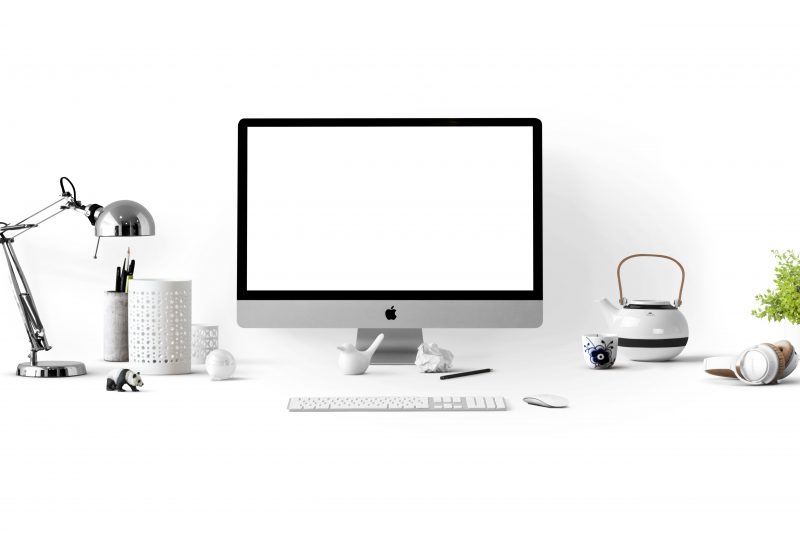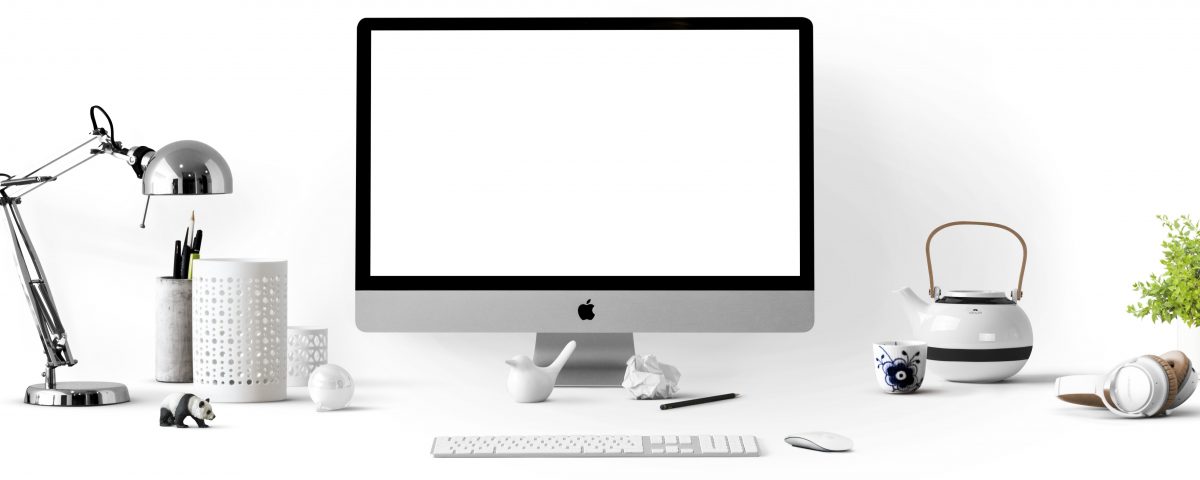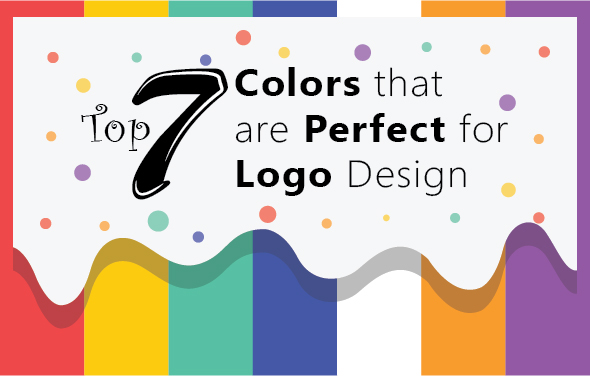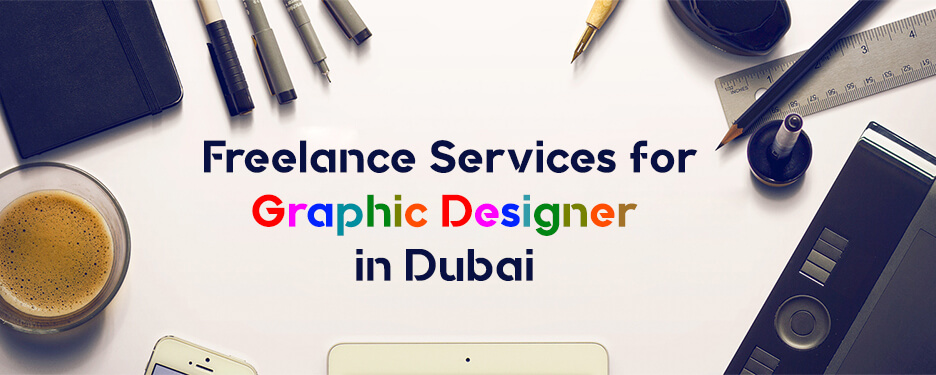8 Trends in Web Design in 2022

The development of the Internet in a huge information apparatus can be deduced from the innovations of design, which over the years have changed the appearance of the World Wide Web. Above all, the mobile revolution has forced web designers to radically change their ideas. Today they have to present contents that fit the smaller screens, without leaving out precious information. But even on the most specific level of web design we can constantly observe new trends, which inform us today about what will be the Internet of tomorrow. We present 8 of these trends to tackle the modern web design of 2022 well equipped.
Index of the Post: 8 trends in web design in 2022
- What does web design mean in 2022?
- Trend and counter trends in web design
- 8 trends that will distinguish web design in 2022
- Load the key elements first
- To be successful with web design trends
- What does web design mean in 2022?
First of all we can observe developments that date back to the mobile adaptation of the last years. Web pages must become even more efficient and user-friendly, in order to compete in the difficult online market, regardless of whether content is displayed on a PC, tablet or smartphone. The voluminous and slightly overloaded designs of the 2000s have long since passed through water; the human eye has had enough. The new maxim requires focusing on the essential.
The new requirement is based on ease of use, therefore in the usability of web pages. Decisive for this trend is the responsive design , very important for the mobile market, which highlights the technical flexibility based on the device used by the user. A modern web design therefore means that an Internet page reacts efficiently to the user’s device and is presented appropriately. Responsive design is consciously created in a predictive way, so that web pages can react skilfully to new systems or to those that are hitherto less usual. In addition, web designers develop not just for browsers, but many of the most famous webpage providers allow easier use of mobile devices, making their own apps available.
We will take some buzzwords back to you in 2022. Among these are the Internet of Things , which is fueling a growing digitization of everyday life and offers users greater possibilities for interaction. On the other hand, the essential progress made in IA research means that automated web services are increasingly improving; web designers could try to take full advantage of this sector too.
Not least this also means a growing concentration on snackable content , which presents web projects in the simplest possible way and puts usability first. At the same time, these digital snacks show a return to the trend of the 2000s, which included a kind of flamboyant display that catches the eye. If these two trends, ie priorities for usability and snackable content, will actually work in harmony and other courageous and innovative ideas will emerge, 2022 could prove to be an exciting year for web designers.
Trend and counter trends in web design
Trends in web design almost never move in the void, but in addition to recalling similar trends, they also have antagonists that carry a certain design element in another direction or even in a completely opposite one. Sometimes counter trends are developed, deriving from a reaction to certain tendencies , which stand out more and more clearly in the digital landscape. Often web designers rely on a counter trend to assert themselves already on the web scene of tomorrow. Below we present some examples of trends and counter-trends, which will make the year that is quite full of surprises.
| Trend | Against trend |
| Stock images , or professional images of agencies that make stock available, which can be integrated into the most diverse web pages; a secure possibility to beautify your site. | Personalized or authentic images, which convey proximity, showing people and companies as they really are, in order to address visitors in the most personal way possible. |
| Symmetrical shapes, boxes, “Flat Grid”, for example web pages with a strictly vertical-horizontal design, which are very easy to navigate and are used efficiently; these pages are oriented to the consolidated and established “rectangular sections” nature of HTML and CSS. | Asymmetrical shapes, experimental designs, “Broken Grid”, ie web interfaces designed in an innovative way, which break with current conventions and thus stand out with an individual and playful character. |
| One Page Design, where all the important information is presented grouped on a page, saving many clicks to the user; you prefer to scroll the user (more and more from a mobile device) rather than clicking it. Here certain standard layouts are being established, especially for companies operating in the digital sector. | Web-nostalgic design trends, which want to return to the principles of the Internet interface of the 2000s (“web brutality”, minimalism, textual interface) or feature innovative menu bars and buttons, which are still needed for site navigation, but without being bulky for use by mobile devices (hamburger menus, micro interactions). |
| Set of bright colors, that is , strong complementary colors and nuances that give that extra touch to the web page; to this is added a symbolism or a combination of colors used consciously (blue for digital products, green for companies for charitable purposes, pink for cosmetics, etc.), to communicate subconsciously to users what is the message that the page wants to transmit. | Minimal colors and a lot of white space to distract as little as possible from the information communicated. The strictly two-color sites (“duotone”) are based on usability and thus renounce a more complex design from the point of view of colors. On the contrary, often, brands and symbols are emphasized. |
8 trends that will distinguish web design in 2022
In general, web design is always developed in the same direction , pre-established for years: an increasing attention to mobile devices (responsive design), easily accessible content, interfaces created according to the purpose, and even reactive or interactive interfaces. At the same time developments in Artificial Intelligence are increasingly influencing web designers, in step with the accessibility of new technologies. Obviously in 2022 several web design trends continue in the previous years and the digital landscape will not change radically. However, some trends allude to a further improvement of the user experience on the platforms, with the intention of redesigning the web of tomorrow.
1. speed / performance gains importance
In reality it is a basic principle of web pages with good design rather than a trend: speed becomes more and more important. On the one hand, thanks go to the mobile revolution; in fact, web page managers want their pages to be easily accessible even from mobile devices, saving data volume. The faster the Internet pages load, the better the user experience will be, as has been the case for 10 years now. However, it is a trend to keep under observation, as web designers increasingly give up items that require a lot of memory and long loading times, to allow faster use of the site.
Many other web design trends are based on this. Thus the growing minimalism in site design means that it renounces extensively to multimedia content that requires a lot of time and space to load, and it is preferable to choose the easiest formats in terms of memory. The “long scrolling” web pages, which place all the necessary information on a single “scrolling” page, point to the fact that the user has to load only this page and not many other subpages. Even the increasingly famous “White Space” indicates the absence of elements, which could limit the loading speed of a web page.
The Internet has grown very quickly in a relatively short time. But there are those who still think it is too slow. Especially mobile data networks in many regions would not be powerful enough yet. However, web designers can already counter shortcomings of this kind by designing their web pages in the simplest way possible.
Other current design trends of modern web design, such as interactive animations, parallax effects or a dynamic background, arouse hype and improve (if applied correctly) the gathering of information. Often, however, an elaborate design brings with it negative effects, which affect the overall performance of the site. Web designers must therefore carefully consider which multimedia and interactive content actually offer added value to the user and which, instead, unnecessarily slow down the website. In general it is worth the rule that “less is more” (less is more), even if this does not necessarily mean a return to flat design.
It is important to note that the performance of a site has a direct impact on the user experience . In this case it is necessary to distinguish between the actual loading time and the one perceived by the user. Delays are problematic only if the user perceives them as such. Therefore web designers rely on the following measures to compensate for high loading times:
Progress Bar
If the visitor has to wait , at least it would be better to inform him for how long . The progress bar does not reduce loading time, but at least, if designed in an original way, it can make waiting fun. At least the user should not be led to leave the page while waiting. In fact, just think that the patience of the modern user decreases inversely proportional to the connection speed.
Load the key elements first
Web sites should be programmed to play above-the-fold content first and play them on the browser. These are those components of the website that are visible to the viewer without having to scroll with the mouse. If these contents are available, users can upload other “below the fold” content later.
Progressive JPEG
The images that are integrated with the progressive JPEG technique are not reproduced from top to bottom in the final resolution, but they use the interlacing process : the viewer is provisionally presented a preview image in low quality that becomes more and more clear until the complete image is finished, the desired image quality is not achieved.
Summing up: for videos, photos and so on, the same rule applies to the content, ie they must be of high quality, unique and relevant to the user. It also makes sense that these contents are loaded only when the visitor displays them. It is precisely the users of mobile devices or those with slow Internet connections that benefit from well-structured sites, without any superfluous data.
2. dynamic background elements
Just a quick look on the net to understand that there are thousands of stock photos . In recent years, website managers have simplified their work: instead of creating their own images, today the standard procedure is to buy photos at an advantageous price, coming from a pre-existing database. However it ends up being not very original , not to mention that the added value for the user is limited to being a way to rest the eyes, when more or less choice reasons interrupt the boundless flow of the text.
But the biggest disadvantage of stock photos is their popularity . In fact, it is very likely that users will find the same photos on a large number of pages on the net. In this way, those websites that offer unique and high quality images and video content stand out from the crowd. An essential trend for web design in 2019 is the use of dynamic images, graphics and videos as a backdrop .
Dynamic background elements allow website managers to communicate information more quickly and directly than static text elements. In addition, using photos, graphics and videos, visitors can be involved on an emotional level . For this reason, a dynamic background design is often used with the aim of provoking certain sensations that give the visitor a precise state of mind.Just a quick look on the net to understand that there are thousands of stock photos . In recent years, website managers have simplified their work: instead of creating their own images, today the standard procedure is to buy photos at an advantageous price, coming from a pre-existing database. However it ends up being not very original , not to mention that the added value for the user is limited to being a way to rest the eyes, when more or less choice reasons interrupt the boundless flow of the text.
But the biggest disadvantage of stock photos is their popularity . In fact, it is very likely that users will find the same photos on a large number of pages on the net. In this way, those websites that offer unique and high quality images and video content stand out from the crowd. An essential trend for web design in 2019 is the use of dynamic images, graphics and videos as a backdrop .
Dynamic background elements allow website managers to communicate information more quickly and directly than static text elements. In addition, using photos, graphics and videos, visitors can be involved on an emotional level . For this reason, a dynamic background design is often used with the aim of provoking certain sensations that give the visitor a precise state of mind.
3. micro interactions
Micro interaction means a trend in UX design, in which certain interactions between users are accompanied by small animated effects. For example, it may be a “Like” button, which rewards the user’s click with a nice moving effect or a smartphone flip. For the UX expert Dan Saffer it is precisely the details that make the difference in terms of user experience.
4. Infinite scrolling or long scrolling
The “Mobile First” approach does not only apply to viewports (which correspond to the display area) and to the representation of web content without loss of quality on different mobile devices. In the future the trend of mobile devices will have more and more influence on web content. In this context, one of the most important developments is the passage from clicking to scrolling . Essentially the “sliding” site is an old acquaintance, but design concepts such as infinite scrolling and the parallax effect continue to be very popular and will remain in vogue even in 2019.
Infinite scrolling
The infinite scrolling (in English: “infinite scrolling”) allows the visitor of a site to access new content, scrolling instead of clicking . When the end of an informational part has been reached, it immediately follows the next part. Social networks like Facebook, Instagram, Reddit and Quora have been using this method for some time to present users with a continuous feed of news . Even in the blogs the infinite scroll has been around for a long time and will play an important role in the future.
Infinite scrolling is suitable for sites with vast amounts of information . While a blog with 100-200 items can still be easily laid out, in large web projects where the number of information is constantly increasing, the subdivision into pages is used less and less. In fact, it is unlikely that a user will intentionally display page 812 out of a total of 5,782 sub-pages. On the contrary, infinite scrolling is usually used with sophisticated algorithms, which prefiltrate information and present the most relevant articles to users first.
However, the managers of websites that in 2019 intend to follow the trend of infinite scrolling should pay attention to an implementation that is suitable for search engines . At the beginning it was difficult for Google to scan websites that used this technique, but today, thanks to the detailed design guidelines provided by the leader of the search engine market , you can opt for this unimpeded solution. However it is good to consider the following aspects:
- Custom URLs for each subpage;
- no overlap of contents;
- the visitor must easily identify the elements sought;
- adequate loading times.
Parallax effect
Even scrolling parallax is nothing new between the web design trends, but will continue to be important. The parallax effect in motion has been used for some years as a basic component of modern sites . This results in an effect of depth perception , as the individual levels of the site move differently. In the best case, in addition to the effect of movement, the site also presents elements that encourage visitors to take a specific action. Parallel scrolling can therefore be combined optimally with interactive storytelling. For example, the ” Every Last Drop ” page illustrates this trend very clearly.
5. personalized user experience
The presentation of web content according to the target is one of the basic principles of modern web design. Especially in e-commerce the selection of contents and their presentation should be oriented to the needs of potential customers. While attention has so far focused on abstract groups of people, in 2019 the focus will continue to be on the experience of use of the individual .
While working as “You might like …” should not be missing in any online store, suppliers such as the music streaming service Spotify and the Netflix video on demand portal go a step further and adapt the range of information, products and presentation methods directly to the ‘ individual . So two users almost never see the same selection of customized products, and this happens even from the initial page of the respective portal.
A web design trend in 2019 will be the personalized website, where visitors will see content that matches their usage habits. The database for a customized user interface is provided by web analytics tools such as Google Analytics or Piwik, which provide content providers with a complete picture of how network users interact with web content.
6. GIF
The small moving images , which are repeated in a loop, are experiencing an amazing rebirth since 2018. Among these have resisted new formats and essentially better performing as WebM, which are mainly found on many communication platforms . The advantages are at your fingertips: on the one hand, GIF files are relatively small and start playing automatically, without affecting the user experience. On the other hand, unlike WebM videos and many other formats of movement, GIFs can renounce sounds and be less intrusive.
A great contribution to the development of GIFs is given by several GIF libraries such as Giphy , thanks to which GIFs can be integrated in a playful way everywhere. Moreover these libraries offer a huge selection of images that allows each user to find the right GIF, coming from many sources. So it’s no wonder that the culture of memes continues to be kept alive with these GIFs. In 2019 online communication will again be based not only on text and emoji, but also on a large variety of GIFs.
7. chatbot
Programs that carry out communication tasks are certainly not new. The chatbots derive from the research sector of Artificial Intelligence (IA) and already nowadays they use it on company websites or online stores. Normally this is a small dialog box that accepts questions asked by users and provides automatically generated answers, which can be customized thanks to machine learning algorithms. The user thus has the impression that his interlocutor is human. The chatbots are used as virtual assistants for shopping or as an alternative to the classic FAQ.
Chatbots are so rarely intrusive and are often activated through small interactive elements. The user thus has the impression that responding to him in real time is an employee of the web service. It often has the ability to respond to the request without leaving the page displayed. The distrust of an AI-controlled interlocutor should have faded since Siri, Alexa, Cortana and the like took off. In most cases, however, chatbots are no longer the search bars that react more dynamically to the search terms entered. So it remains to be seen how far the chatbots will be developed in 2019.
8. ordered interface
One aspect that always recurs among web design trends is that a good layout, organized in an intelligent way, is often imitated. The user interfaces of many sites and web apps are oriented towards the design and organization of the contents more and more to established practices, so the layout continues to influence the usability of a website .
Generally, if you choose an ordered User Interface (UI) it is difficult to make mistakes. In the same way you can easily redo the design of portals known for some time, in the case of larger sites, or that of blogs, in the case of small pages. Recently two trends have emerged in web design related to the layout, which can be found on many graphical interfaces also in 2019.
Hamburger menu
This phenomenon has been affirmed in a hurry, so much so as to represent for many users a certainty in the structure of the menus: the small button menu , which is called in English also “hamburger menu icon” (also known in Italian as “hamburger icon” ) or “hamburger button”. Initially it was mainly used for the drop-down menus of mobile pages and apps; now this symbol, which recalls the layers of a hamburger and is often represented with the mathematical symbol “≡” (which would actually be “equal”), also marks the menu button for many desktop versions.
Card layout
The second trend of web design concerns the graphic presentation of contents. Card layouts (also called “card-based design”, ie “card-based design” in Italian) are used more and more: in this case contents based on text and / or images or “Call to action” buttons are presented in different boxes , distributed over the entire user interface. There are many advantages: in addition to the many possibilities to design a site in a clearer and more optically more engaging way, the web design card layout also has benefits from a practical point of view.
In fact, because the individual boxes or individual cards act as containers for web content, you can easily move the grids within the site. In particular, in the case of a responsive layout, the redistribution of the contents of the pages is made simpler. The popularity of the card layout is mainly due to image web services, such as Pinterest, or to web design platforms such as Dribbble.
To be successful with web design trends
The trends of web design in 2019 will develop in the name of interactivity . Furthermore, in the future, websites should be designed more and more user-friendly and allow quick access to content. Thus web content is not adapted separately for different devices, but is optimized to be represented on all types of devices within the responsive design.
The parallax effect and infinite scrolling are beloved stylistic tools, which have the task of accompanying visitors in navigating the website. This is also the key word for the interactive storytelling trend : the information provided to the client is not presented in a neutral manner, but is packaged in a brief history. Hand-drawn illustrations, high-quality background elements and custom fonts add a personal touch to the website.
Now it is more important than ever to personally contact the website visitors and engage them emotionally. The basic principle remains the same: a user-oriented website that offers high-quality content in an engaging way is the first step on the road to success in the World Wide Web.
Who is currently planning their website or would like to update an existing one should be inspired by some of these web design trends that will dominate in 2019. So today we set up a site that is already able to meet the needs and expectations of tomorrow .



